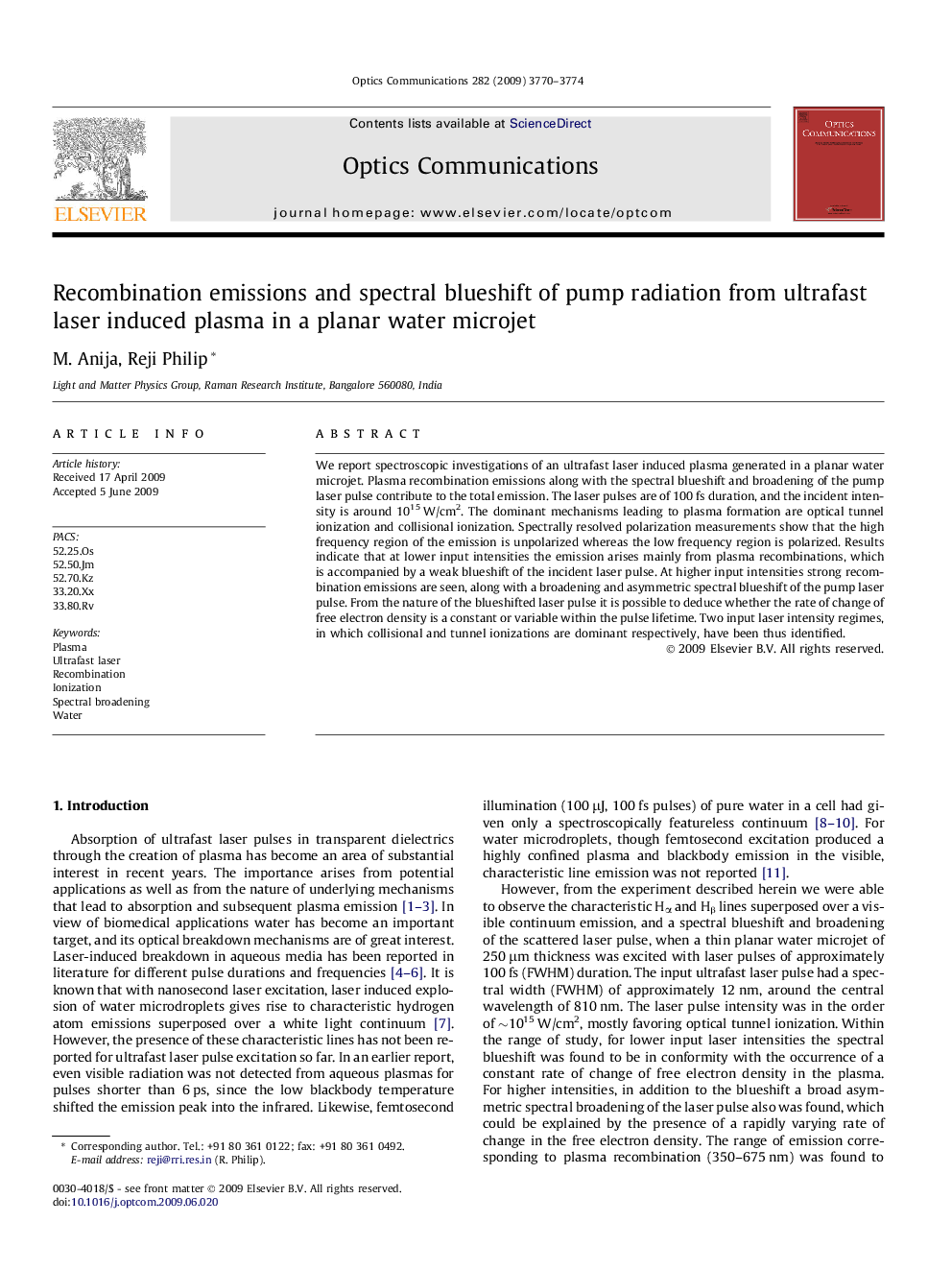| Article ID | Journal | Published Year | Pages | File Type |
|---|---|---|---|---|
| 1539061 | Optics Communications | 2009 | 5 Pages |
We report spectroscopic investigations of an ultrafast laser induced plasma generated in a planar water microjet. Plasma recombination emissions along with the spectral blueshift and broadening of the pump laser pulse contribute to the total emission. The laser pulses are of 100 fs duration, and the incident intensity is around 1015 W/cm2. The dominant mechanisms leading to plasma formation are optical tunnel ionization and collisional ionization. Spectrally resolved polarization measurements show that the high frequency region of the emission is unpolarized whereas the low frequency region is polarized. Results indicate that at lower input intensities the emission arises mainly from plasma recombinations, which is accompanied by a weak blueshift of the incident laser pulse. At higher input intensities strong recombination emissions are seen, along with a broadening and asymmetric spectral blueshift of the pump laser pulse. From the nature of the blueshifted laser pulse it is possible to deduce whether the rate of change of free electron density is a constant or variable within the pulse lifetime. Two input laser intensity regimes, in which collisional and tunnel ionizations are dominant respectively, have been thus identified.
